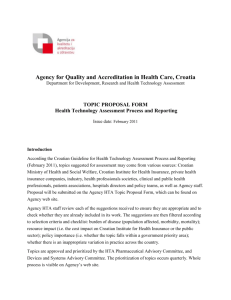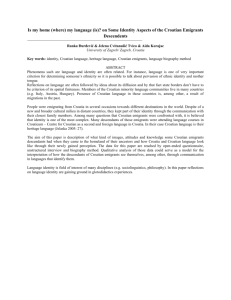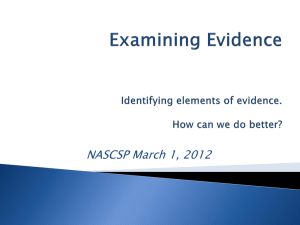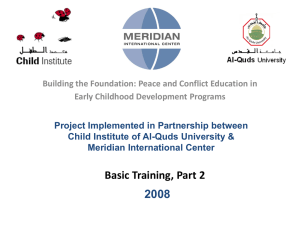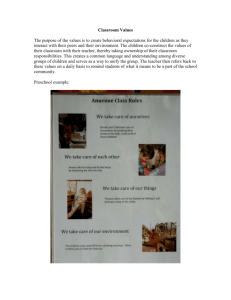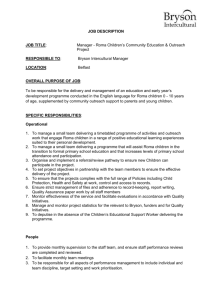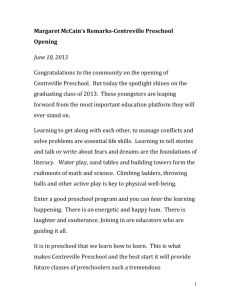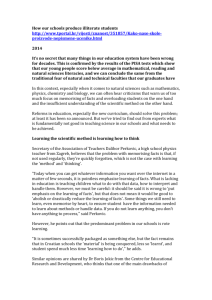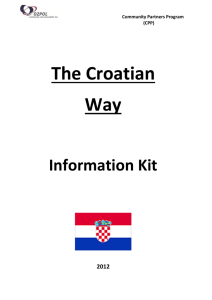From preschool to full
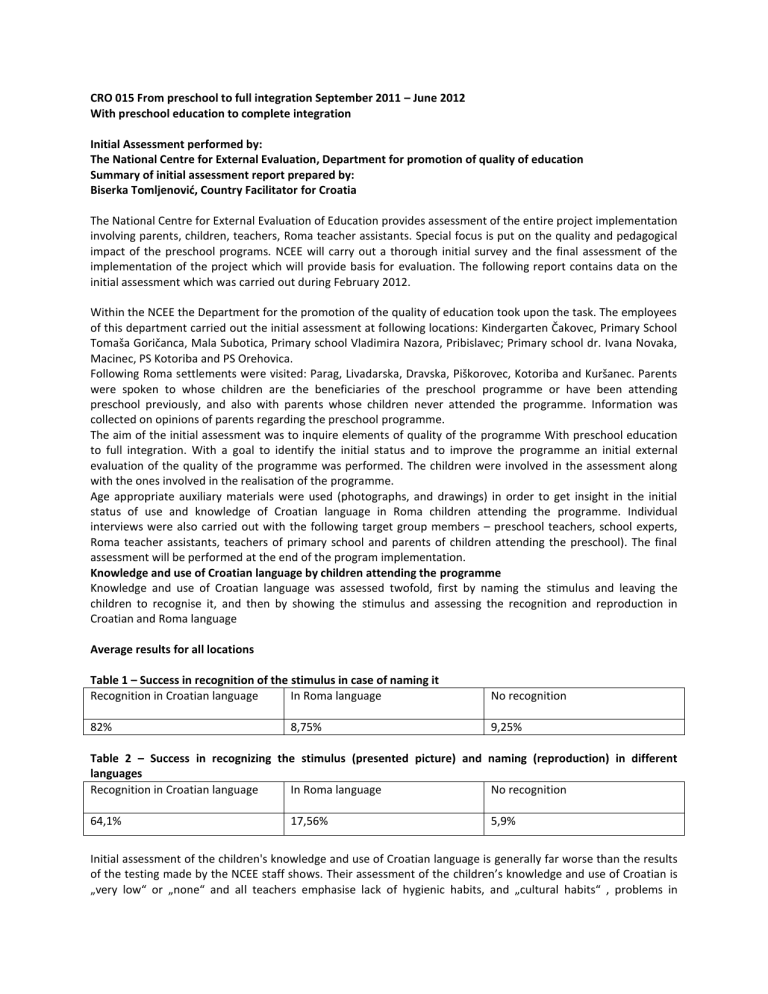
CRO 015 From preschool to full integration September 2011 – June 2012
With preschool education to complete integration
Initial Assessment performed by:
The National Centre for External Evaluation, Department for promotion of quality of education
Summary of initial assessment report prepared by:
Biserka Tomljenović, Country Facilitator for Croatia
The National Centre for External Evaluation of Education provides assessment of the entire project implementation involving parents, children, teachers, Roma teacher assistants. Special focus is put on the quality and pedagogical impact of the preschool programs. NCEE will carry out a thorough initial survey and the final assessment of the implementation of the project which will provide basis for evaluation. The following report contains data on the initial assessment which was carried out during February 2012.
Within the NCEE the Department for the promotion of the quality of education took upon the task. The employees of this department carried out the initial assessment at following locations: Kindergarten Čakovec, Primary School
Tomaša Goričanca, Mala Subotica, Primary school Vladimira Nazora, Pribislavec; Primary school dr. Ivana Novaka,
Macinec, PS Kotoriba and PS Orehovica.
Following Roma settlements were visited: Parag, Livadarska, Dravska, Piškorovec, Kotoriba and Kuršanec. Parents were spoken to whose children are the beneficiaries of the preschool programme or have been attending preschool previously, and also with parents whose children never attended the programme. Information was collected on opinions of parents regarding the preschool programme.
The aim of the initial assessment was to inquire elements of quality of the programme With preschool education to full integration. With a goal to identify the initial status and to improve the programme an initial external evaluation of the quality of the programme was performed. The children were involved in the assessment along with the ones involved in the realisation of the programme.
Age appropriate auxiliary materials were used (photographs, and drawings) in order to get insight in the initial status of use and knowledge of Croatian language in Roma children attending the programme. Individual interviews were also carried out with the following target group members – preschool teachers, school experts,
Roma teacher assistants, teachers of primary school and parents of children attending the preschool). The final assessment will be performed at the end of the program implementation.
Knowledge and use of Croatian language by children attending the programme
Knowledge and use of Croatian language was assessed twofold, first by naming the stimulus and leaving the children to recognise it, and then by showing the stimulus and assessing the recognition and reproduction in
Croatian and Roma language
Average results for all locations
Table 1 – Success in recognition of the stimulus in case of naming it
Recognition in Croatian language In Roma language
82% 8,75%
No recognition
9,25%
Table 2 – Success in recognizing the stimulus (presented picture) and naming (reproduction) in different languages
Recognition in Croatian language In Roma language No recognition
64,1% 17,56% 5,9%
Initial assessment of the children's knowledge and use of Croatian language is generally far worse than the results of the testing made by the NCEE staff shows. Their assessment of the children’s knowledge and use of Croatian is
„very low“ or „none“ and all teachers emphasise lack of hygienic habits, and „cultural habits“ , problems in
socialization, and lack of social skills. The reasons for that they find in specific conditions of living in Roma settlements, illiteracy of parents. Only in Kotoriba the teachers and school experts assess that the level of knowledge and use of Croatian language is satisfactory and that the hygienic habits are satisfactory as well. It is interesting that the results of the assessment of the NCEE staff for this location do not record best results and success rate of knowledge of Croatian language. So, a difference in the perception of the school staff can be observed, hence, in some schools children achieved significantly higher results than in Kotoriba (even up to 95% in
Croatian language) and the school staff regardless of that assessed their knowledge to be very poor or none.
The following Table includes data on findings according to other defined areas of evaluation: Material-technical conditions, cooperation within the institution, cooperation with the local community, professional staff availability, cooperation with parents. Scale for evaluation used ranges from 1 to 5, one being the lowest and five being the highest mark of success.
Average results for all locations
MATERIAL –TECHNICAL CONDITIONS
COOPERATION WITHIN INSTITUTION
4,1
3,91
COOPERATION WITH THE LOCAL COMMUNITY 4,25
AVAILABILITY and TRAINING OF PROFESSIONAL STAFF 3,5
COOPERATION WITH PARENTS 3,85
Prevailing recommendations refer to continuous and specific training of teachers and expert staff, better defining the role of the Roma teacher assistant and better cooperation within the institutions on combining internal resources and including Roma teacher assistants in planning and increased cooperation. Also, often a need for better cooperation with the local community is mentioned and finding creative and proactive ways to cooperate with parents. In addition, better support of other institutions in the community is necessary, especially the Centre for social work.

